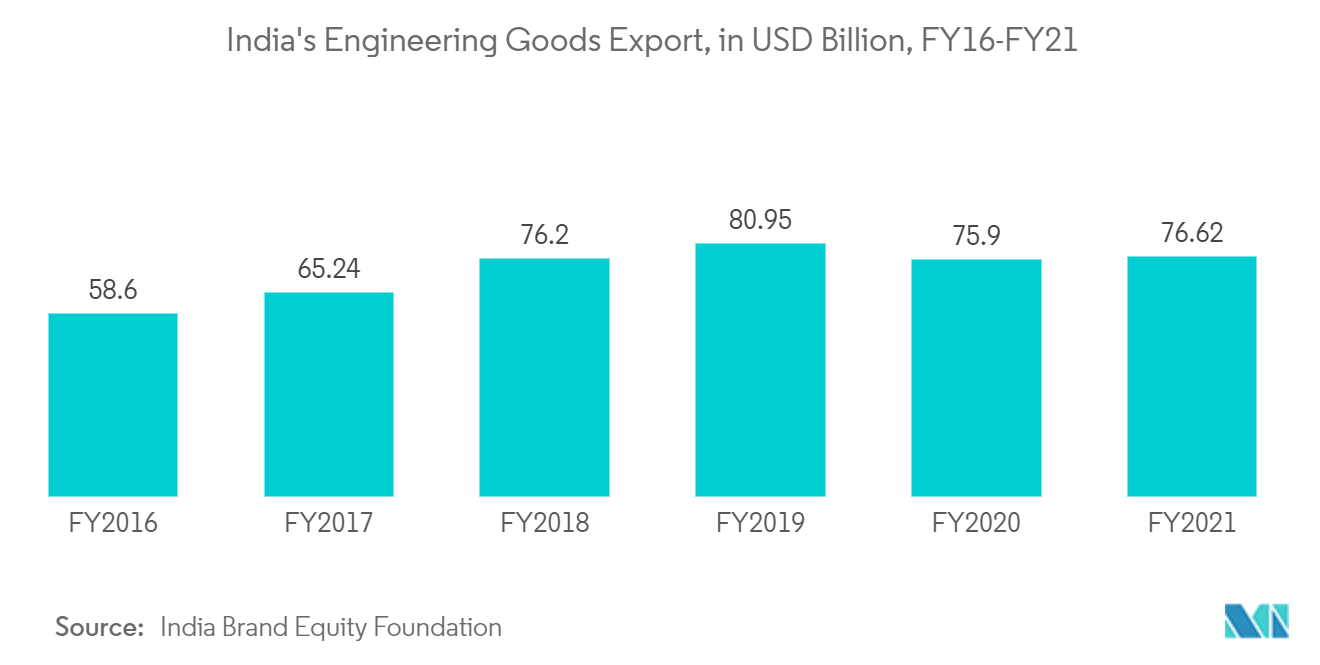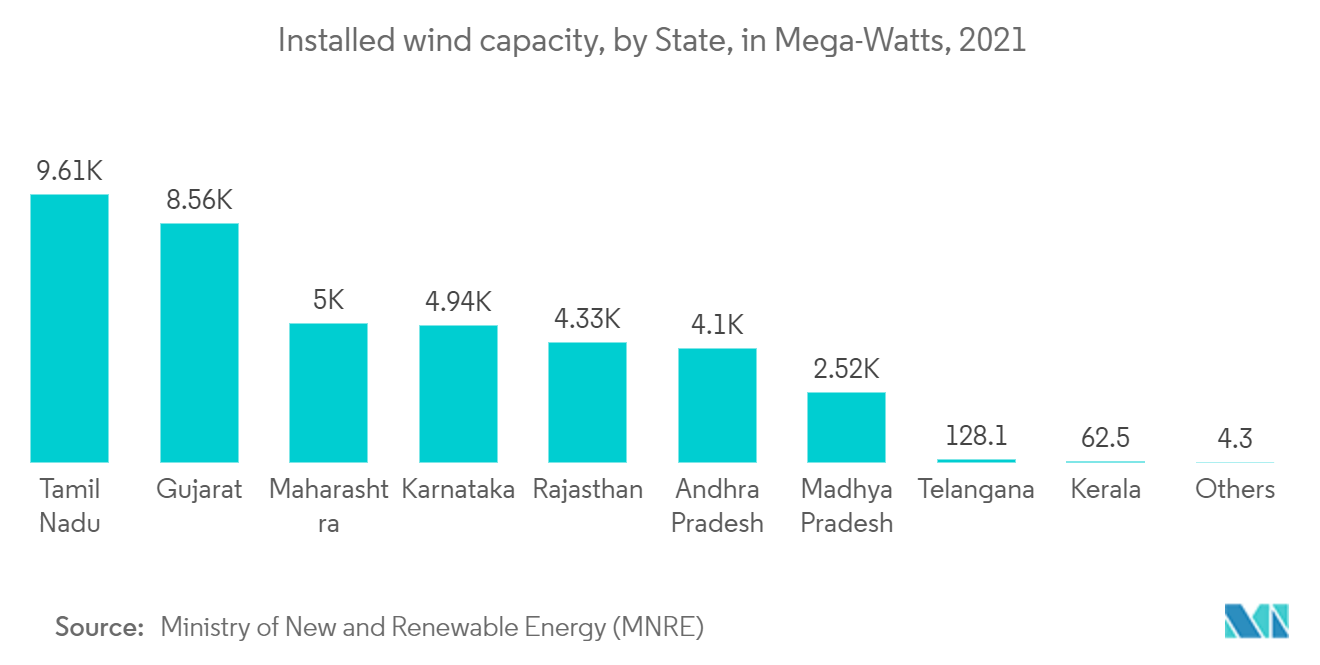Market Trends of India Industrial Lubricants Industry
Heavy Equipment Segment to Dominate the Market Demand
- In the construction, mining, and agricultural industries, lubricants are useful for preventing premature failure and the performance decline of heavy equipment.
- According to the Ministry of Commerce and Industry, in FY21, India's heavy electrical equipment production stood at INR 168,949 crores (USD 21.15 billion). The electrical equipment market is forecasted to grow and reach USD 72 billion by 2025, up from USD 48-50 billion in 2021. The electrical equipment export market is forecasted to reach USD 13 billion by 2025, up from USD 8.62 billion in 2021.
- The metalworking activities in the country witnessed a resurge in 2021, with the lockdown measures being gradually relaxed and state and local governments focusing on domestic manufacturing.
- Indian machine tool production and consumption were estimated at INR 6,602 crores (USD 879.38 million) and INR 12,036 crores (USD 1.6 billion), respectively, in FY21, while exports stood at INR 531 crores (USD 66.48 million).
- Heavy-duty vehicle utilization is expected to rise in the future as a result of significant infrastructure investments.
- According to the Ministry of Commerce and Industry, the export of engineering goods has increased from USD 58.6 billion to USD 76.62 billion in 2021.
- In FY22, India exported engineering goods worth USD 111.63 billion, a 45.51% increase year-on-year. India exports engineering goods mostly to the United States and Europe, which account for over 60% of the total exports.
Therefore, the increasing demand for and usage of heavy equipment are further projected to drive the demand for industrial lubricants during the forecast period.

Surging Demand from Wind Energy Sector
- India's electricity industry is one of the world's most diverse. Power generating options include coal, lignite, natural gas, oil, hydro, and nuclear power, as well as feasible non-conventional options including wind, solar, and agricultural and household waste.
- The country's electricity demand has risen significantly and is likely to continue to climb in the coming years. To fulfill the country's growing need for power, a substantial increase in installed generating capacity is necessary.
- The lubricant requirements in wind turbine gearboxes are more stringent, compared to other industrial gear oils. This is due to the high temperatures, bearing wear, corrosion and oxidation, and load weights involved during the process of power generation.
- India's overall installed wind power capacity was 41.2 GW as of August 2022, making it the world's fourth-highest installed wind power capacity.
- The world's largest renewable energy park of 30 GW capacity solar-wind hybrid project is under installation in Gujarat.
- The government is now also pushing for offshore wind. The Ministry of New and Renewable Energy has revived its offshore wind power development goals by unveiling a roadmap for installing 30GW by 2030.
- Tamil Nadu's wind production capacity was around 24% of India's total in 2021. The total wind installed capacity in Tamil Nadu is 9608.04 MW. Maharastra has an installed wind power capacity of 5000.33 MW. Government of Madhya Pradesh has sanctioned a 15 MW project at Nagda Hills near Dewas.
- Therefore, with an increase in wind energy infrastructure, the demand for industrial lubricants, such as gear oils, grease, etc., is expected to increase in the country, during the forecast period.


